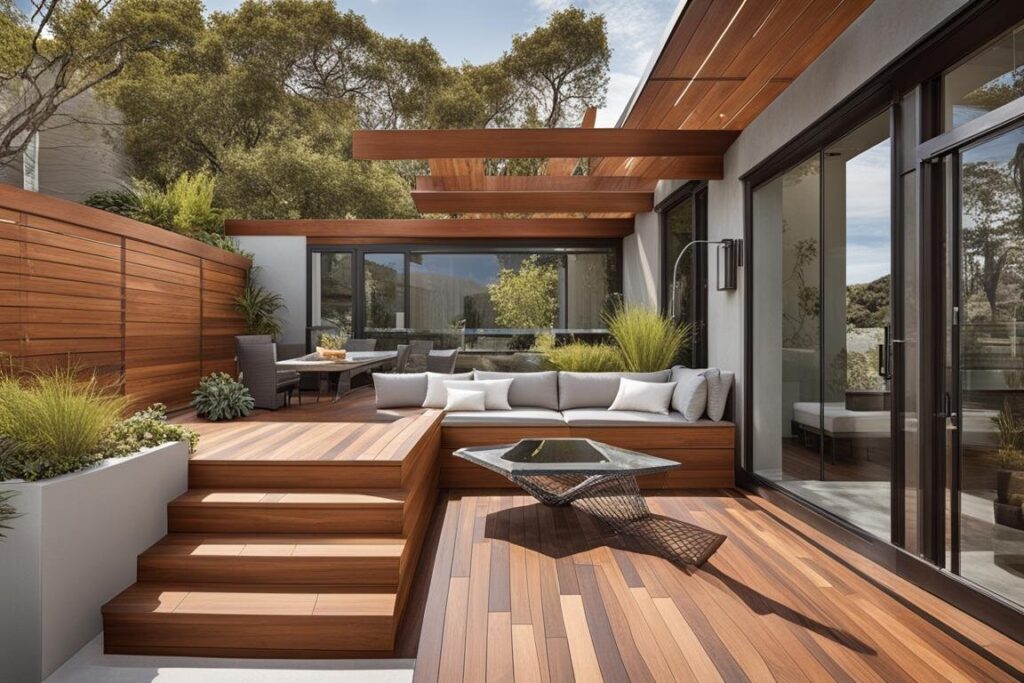
The Ultimate Guide to Deck Design Engineering in SF

What You Will Learn About Deck Design Engineering in SF
By reading this article, you will learn about:
– The importance of proper deck design engineering and compliance with local regulations in San Francisco.
– Site assessment, structural considerations, and material selection for residential decks in SF.
– The role of structural engineers in deck construction, maintenance, and future trends in deck engineering.
What is Deck Design Engineering in San Francisco?
Deck design engineering in San Francisco is the meticulous process of creating safe, functional, and visually appealing outdoor spaces. Whether for residential or commercial properties, this engineering discipline ensures that decks are structurally sound, compliant with local regulations, and designed to withstand the unique environmental factors of the Bay Area.
Definition and Importance
Deck design engineering encompasses the scientific and creative processes involved in designing, analyzing, and constructing outdoor decks. It involves a comprehensive understanding of structural integrity, material selection, and adherence to building codes. The importance of professional engineering in deck design cannot be overstated, as it directly impacts the safety and longevity of the structure.
Significance of Proper Design
Proper design is essential for ensuring that decks can withstand the diverse weather conditions of San Francisco, including fog, wind, and occasional seismic activity. Additionally, well-engineered decks enhance the overall value and appeal of a property, contributing to a better quality of life for residents and adding to the aesthetic charm of the city.
Deck Regulations and Building Codes in San Francisco
San Francisco has specific regulations and building codes that govern the design and construction of decks. Understanding and complying with these regulations is fundamental for any deck design engineering project in the city.
Overview of Local Regulations
The San Francisco Building Code outlines specific requirements for deck construction, including setback regulations, height restrictions, and other guidelines aimed at preserving the integrity of the city’s architecture and ensuring the safety of its residents.
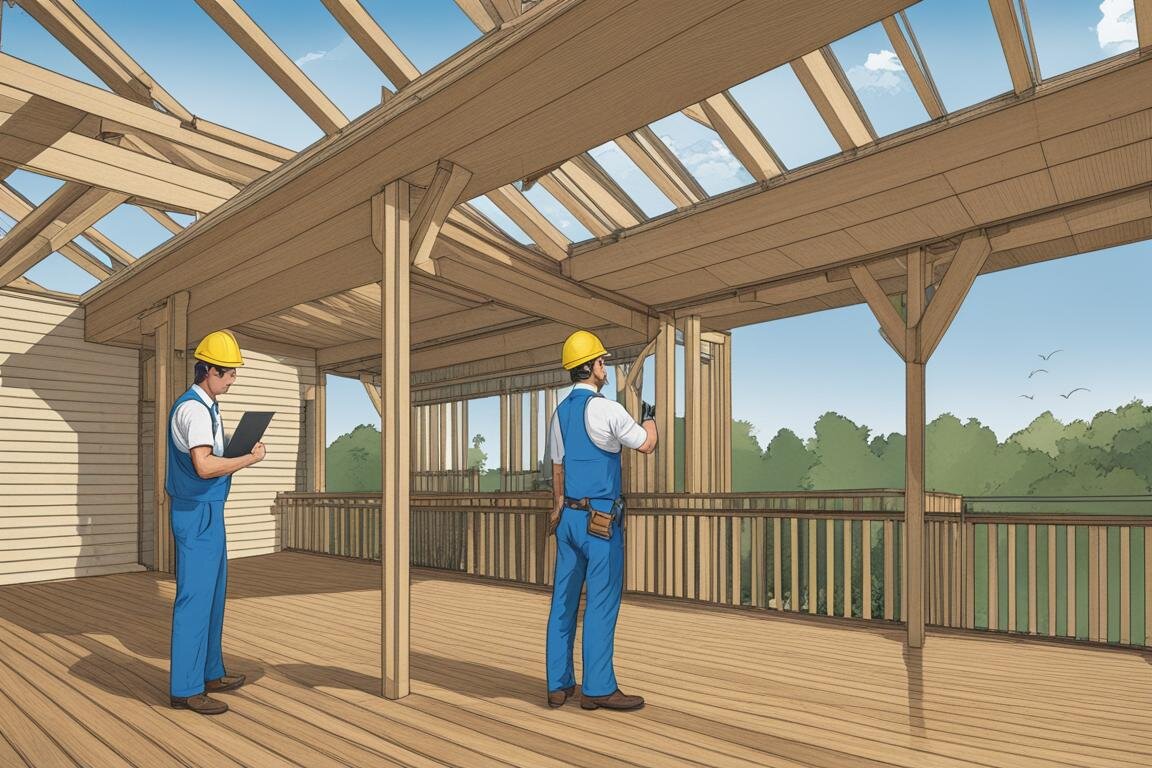
Compliance for Structural Integrity
Structural integrity is a primary concern in deck design engineering. Compliance with building codes ensures that decks are built to withstand various loads, including live loads (such as people and furniture) and environmental loads (such as wind and snow).
Permitting Process
Before commencing any deck construction, obtaining the necessary permits is essential. The permitting process involves submitting detailed plans that demonstrate compliance with building codes and regulations, as well as obtaining approval from the relevant authorities.
Site Assessment and Analysis
The site assessment and analysis phase is a critical early step in deck design engineering. It involves evaluating the proposed location for the deck and considering various environmental factors that may impact the design and construction process.
Initial Engineering Steps and Site Evaluation
Professional engineers conduct thorough site evaluations to assess the soil conditions, topography, and existing structures that may influence the design and placement of the deck. This initial step is crucial for determining the feasibility of the project and laying the groundwork for the design process.
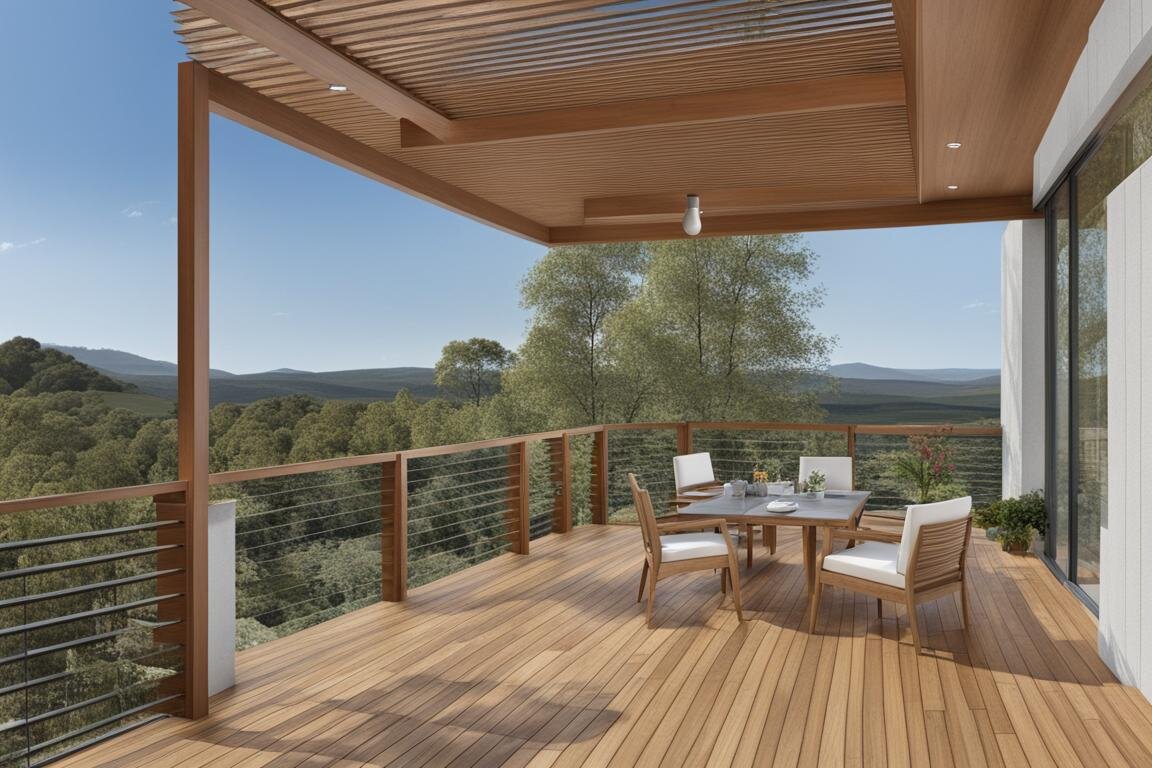
Environmental Factors Impacting Design
San Francisco’s unique climate and environmental conditions, including coastal proximity and seismic activity, necessitate careful consideration in the design process. Engineers must account for factors such as moisture, temperature variations, and potential seismic events when designing decks for the region.
| Aspect | Considerations |
|---|---|
| Site Assessment | – Soil conditions – Topography – Existing structures |
| Environmental Factors | – Seismic activity – Moisture – Temperature variations |
| Load-Bearing Capacity and Safety Factors | – Maximum weight support – Incorporation of safety factors |
| Materials Selection and Durability | – Impact on longevity – Resistance to coastal climate – Decay resistance |
| Seismic Activity Analysis and Mitigation | – Seismic bracing – Flexible connections |
Structural Considerations
Ensuring the structural integrity of decks is paramount in deck design engineering. Engineers meticulously analyze load-bearing capacity, material durability, and seismic resilience to create safe and enduring structures.
Load-Bearing Capacity and Safety Factors
Calculating the load-bearing capacity of a deck involves assessing the maximum weight it can support without compromising its structural integrity. Safety factors are also incorporated to account for unforeseen loads and to ensure a margin of safety in the design.
Materials Selection and Durability
The choice of materials significantly impacts the durability and longevity of a deck. Engineers carefully select materials that can withstand the coastal climate, resist decay, and maintain their structural integrity over time.
Seismic Activity Analysis and Mitigation
San Francisco’s proximity to seismic activity necessitates specialized seismic analysis and mitigation strategies in deck design engineering. Engineers employ techniques such as seismic bracing and flexible connections to enhance the seismic resilience of decks.
Design Process for Residential Decks
The design process for residential decks involves a systematic approach that integrates engineering principles with the client’s aesthetic preferences and functional requirements.
Step-by-Step Design Process
The design process typically begins with conceptualizing the client’s vision for the deck, followed by detailed structural planning, material selection, and the creation of comprehensive engineering drawings that guide the construction phase.
Planning and Attention to Detail
Engineering-led planning ensures that every aspect of the deck’s design is meticulously considered, from the placement of support posts to the integration of safety features. Attention to detail at the design stage is crucial for avoiding issues during construction and ensuring long-term performance.
Material Selection for San Francisco Decks
The selection of materials for San Francisco decks is a critical decision that directly impacts the performance and longevity of the structure.
Commonly Used Materials
Common materials used in deck construction include pressure-treated wood, composite decking, and tropical hardwoods. Each material offers distinct advantages in terms of durability, maintenance requirements, and aesthetic appeal.
Environmental and Aesthetic Considerations
In addition to durability, environmental considerations such as sustainability and resistance to moisture are essential in material selection. Furthermore, the aesthetic appeal of the chosen materials contributes to the overall visual impact of the deck.
Construction and Installation Practices
The construction and installation phase of deck engineering involves translating the design plans into a physical structure while adhering to industry best practices and safety standards.
Role of Structural Engineers in Deck Construction
Structural engineers play a pivotal role in overseeing the construction process, ensuring that the design specifications are accurately implemented, and conducting on-site inspections to verify structural integrity.
Best Practices for On-Site Execution and Safety
Adherence to best practices, including proper fastening techniques, accurate leveling, and compliance with safety protocols, is crucial for the successful installation of decks. Quality craftsmanship and attention to detail during construction contribute to the long-term performance of the structure.
Maintenance, Inspections, and Compliance
Maintaining deck integrity and compliance with safety standards is an ongoing responsibility for property owners and stakeholders in the construction and engineering industries.
Importance of Regular Maintenance
Regular maintenance, including inspections for structural integrity, moisture damage, and wear and tear, is essential for preserving the safety and appearance of decks over time.
Guidelines for Compliance with Standards
Adhering to industry standards and manufacturer guidelines for maintenance and repairs ensures that decks continue to meet safety and performance requirements.
Inspections and Safety Checks
Periodic inspections by qualified engineers help identify potential issues early and ensure that decks remain structurally sound and compliant with regulations.
Real-Life Case Study: The Challenges of Retrofitting a Historic Deck
Background
In 2018, Sarah and her family purchased a charming Victorian home in San Francisco’s historic district. The house came with a beautiful but aging redwood deck that wrapped around the back of the property. As part of their renovation plans, they wanted to ensure the deck was not only safe for use but also met the city’s strict building codes for historic properties.
Structural Considerations
Sarah quickly learned that the load-bearing capacity of the existing deck was not up to current standards, and the seismic activity analysis revealed potential vulnerabilities. She consulted with a structural engineer to assess the safety factors and develop a retrofitting plan that would strengthen the deck without compromising its historical integrity.
Compliance and Permitting
Navigating the permitting process for a historic property added an extra layer of complexity. Sarah had to work closely with the local preservation board to ensure that the proposed changes met the guidelines for preserving the home’s historical character while still addressing the structural concerns.
Construction and Installation
The retrofitting process required precision and expertise to reinforce the deck without altering its outward appearance. The structural engineer played a crucial role in overseeing the construction, ensuring that the best practices were followed to guarantee the safety and longevity of the deck.
This case study highlights the unique challenges and considerations involved in retrofitting a historic deck in San Francisco. It underscores the importance of collaboration between homeowners, engineers, and regulatory bodies to achieve a successful outcome that balances structural integrity with historical preservation.
Case Studies and Examples of Deck Projects
Examining successful deck projects in San Francisco provides valuable insights into engineering solutions and innovative design approaches.
Showcase of Successful Projects in San Francisco
Case studies highlighting notable deck engineering projects in San Francisco offer real-world examples of effective design, construction, and material selection.
Real-World Examples and Engineering Solutions
Analyzing real-world examples demonstrates how engineering expertise has been applied to address unique challenges and produce exceptional deck structures in the city.

Future Trends and Innovations in Deck Engineering
The deck engineering industry is continually evolving, with emerging trends and innovations shaping the future of deck design in San Francisco.
Emerging Trends and Innovations
Innovations such as sustainable materials, advanced structural analysis tools, and smart design technologies are influencing the direction of deck engineering.
Potential Future Developments in San Francisco’s Deck Engineering Industry
Anticipated developments, including enhanced seismic-resilient designs and eco-friendly construction practices, are expected to influence the trajectory of deck engineering in San Francisco.
Questions
Q. Who can benefit from deck design engineering in SF?
A. Homeowners, architects, and developers can benefit from our services.
Q. What is the role of a structural engineer in deck design?
A. A structural engineer ensures the safety and stability of the deck.
Q. How can I ensure my deck design is compliant with SF regulations?
A. Our team is well-versed in SF building codes and will ensure compliance.
Q. What makes your deck design engineering services stand out?
A. We offer innovative solutions and prioritize client satisfaction.
Q. How long does the deck design engineering process typically take?
A. The timeline varies, but we strive to complete projects efficiently.
Q. What if I have a specific vision for my deck design?
A. We collaborate closely with clients to bring their vision to life.

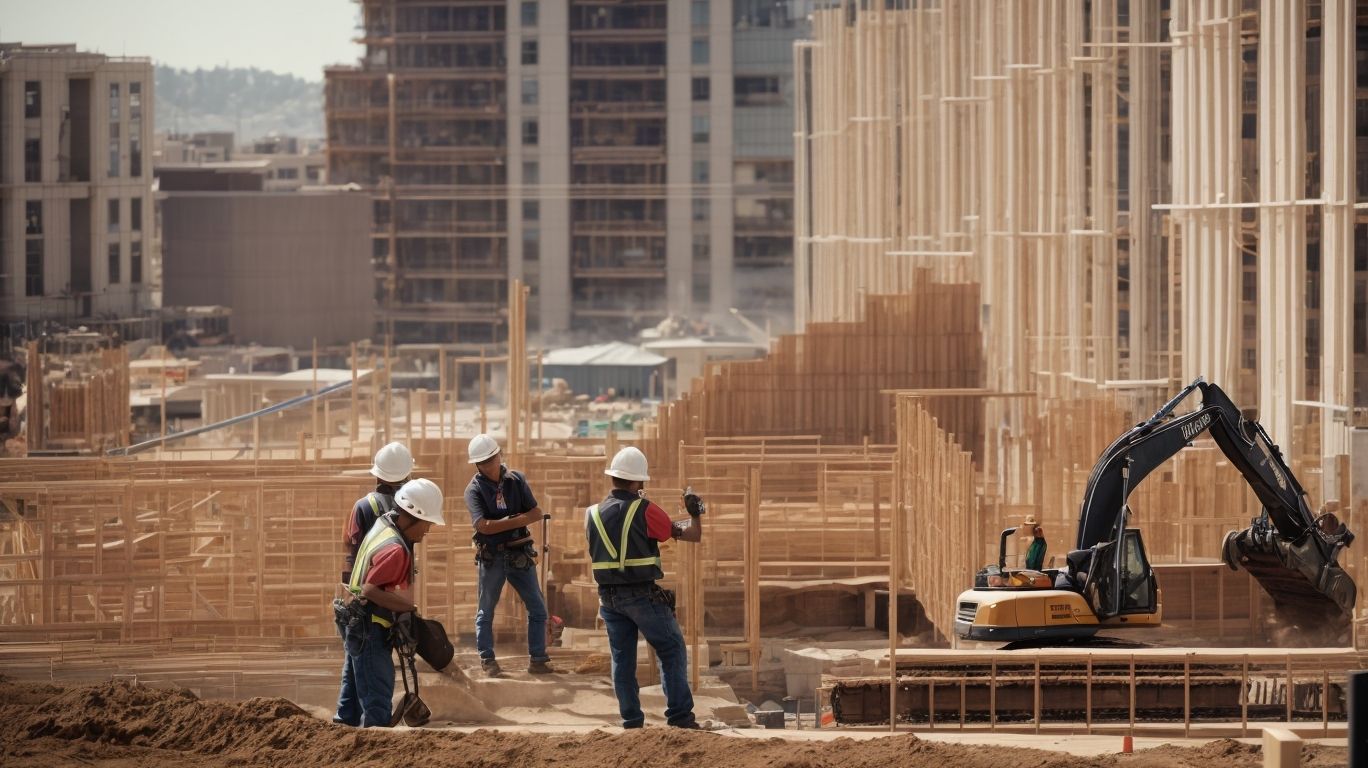
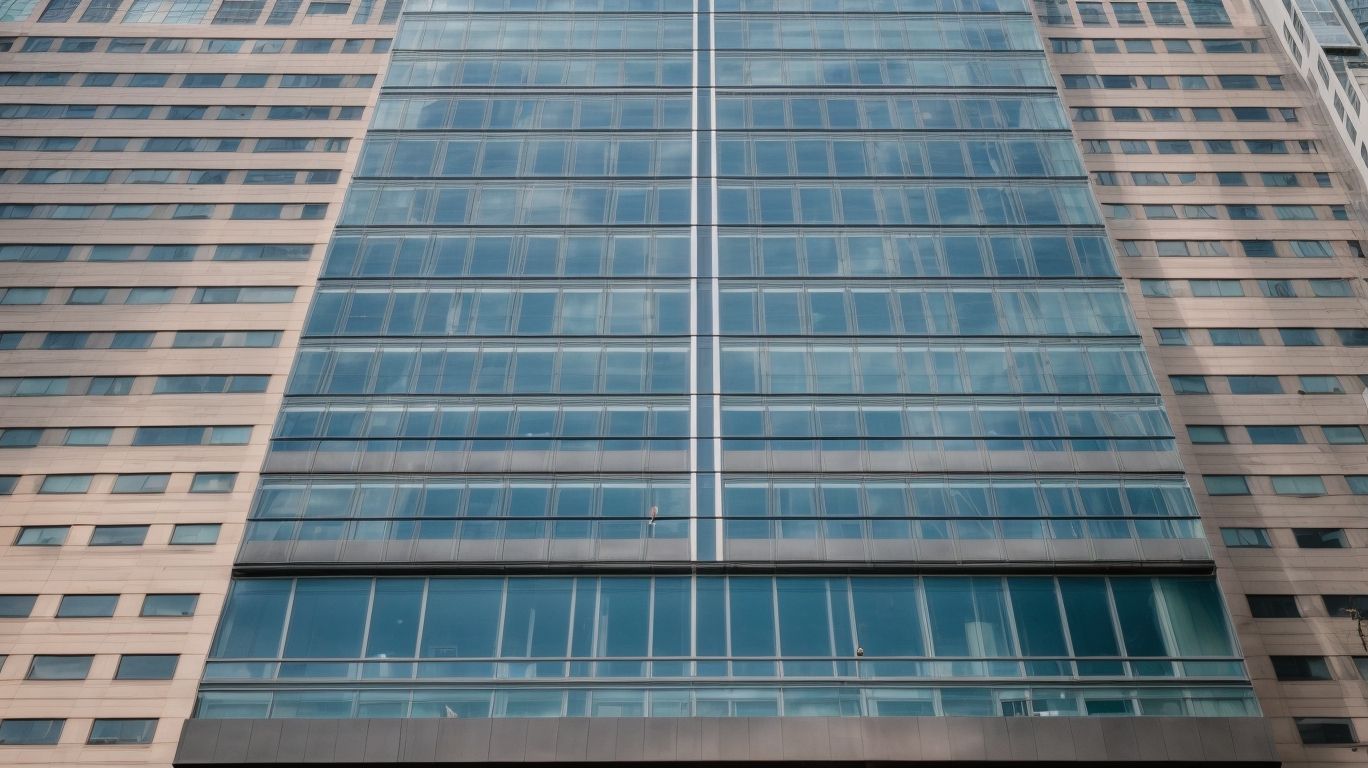

No Comments